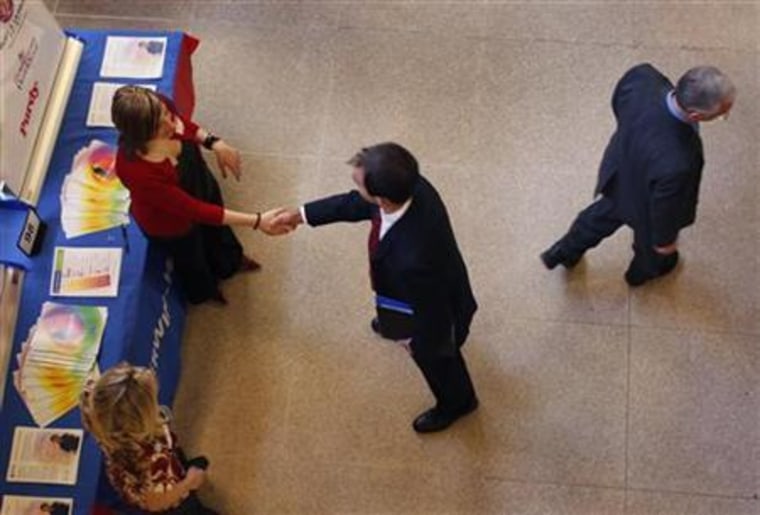The U.S. economy posted a second straight month of solid gains in March as the nation’s jobless rate fell to a two-year low of 8.8 percent, marking a decisive shift in the labor market that should help to underpin the economic recovery.
Businesses created 216,000 jobs last month, according to the Labor Department’s latest employment report, after adding 192,000 jobs in February. The past two months mark the fastest two-month pace of job creation since before the recession began. Factories, retailers, education, health care and an array of professional and financial services expanded payrolls.
Another month of brisk hiring provided the latest sign that the economy is strengthening nearly two years after the recession ended. Still, a surprisingly large number of people who stopped looking for work during the downturn have yet to start looking again.
Private employers, the backbone of the economy, are driving the gains. They added more than 200,000 jobs for a second straight month. It was the first time that's happened since 2006 — more than a year before the recession started.
"The U.S. labor market is finally making some serious progress," said Sal Guatieri, economist at BMO Capital Markets Economics.
The unemployment rate dipped from 8.9 percent in February. The rate has fallen a full percentage point over the past four months. That's the sharpest drop since 1983.
Friday’s upbeat jobs report shows the U.S. economy is demonstrating real strength President Barack Obama said Friday, speaking at the conclusion of a tour of a UPS shipping facility in Landover, Md. Obama added that much work remains to get millions of Americans back to work.
Economists predict employers will add jobs at roughly the same pace for the rest of this year. That would generate about 2.5 million new positions. Still, that would make up for only a small portion of the 7.5 million jobs wiped out during the recession. A big factor in the lower unemployment rate is that the proportion of people who either have a job or are looking for one is surprisingly low for this stage of the recovery.
People who stopped looking for work during the downturn are not counted as unemployed. If many out-of-work people start looking for work again, they will be counted and the unemployment rate could go up. That could happen even if the economy is adding jobs.
Local governments, wrestling with budget shortfalls, cut 15,000 workers last month and are expected to keep shedding jobs. Home prices are falling amid weak sales and a record number of foreclosures. Construction spending dropped in February to a 12-year low. Higher food and gas prices are leaving consumers with less disposable income to spend on other goods and services.
Workers' paychecks were flat in March. Average hourly earnings held steady at $22.87, unchanged from February. Over the past 12 months, wages have lagged behind inflation. Workers have little bargaining power to demand big pay raises because the job market is still healing slowly.
Another report out Friday showed that manufacturing activity cooled off a bit last month after expanding in February at the fastest pace in nearly seven years. Still, the sector grew for the 20th straight month, another positive sign for the economy.
The number of unemployed people dipped to 13.5 million in March, still almost double since before the recession began in December 2007.
Including part-time workers who would rather be working full time, plus people who have given up looking altogether, the percentage of "underemployed" people dropped to 15.7 percent in March, the smallest share in two years.
Professional and business services, including accountants, bookkeepers, engineers and computer designers, added 78,000 positions, the most since November. Of those, 29,000 were temporary positions.
Factories added 17,000 jobs in March, the fifth straight month of gains. Retailers added nearly 18,000 jobs, after cutting them in February. Financial services expanded payrolls by 6,000, following two straight months of cutbacks. Education and health services expanded employment by 45,000, leisure and hospitality added 37,000 jobs.
Aside from layoffs by local governments, other sectors eliminating jobs included construction, transportation and warehousing, and information services, such as telecommunications. State government hiring was flat, after four straight months of layoffs.
Retailer Aaron's Inc. said this week that it plans to create almost 1,000 jobs in the United States and Canada this year. The company sells and leases residential furniture, consumer electronics, home appliances and accessories.
Google Inc. said earlier this year that it plans to hire more than 6,200 workers in 2011, the biggest expansion by the Internet's most profitable company. That would increase the company's work force by more than 25 percent.
